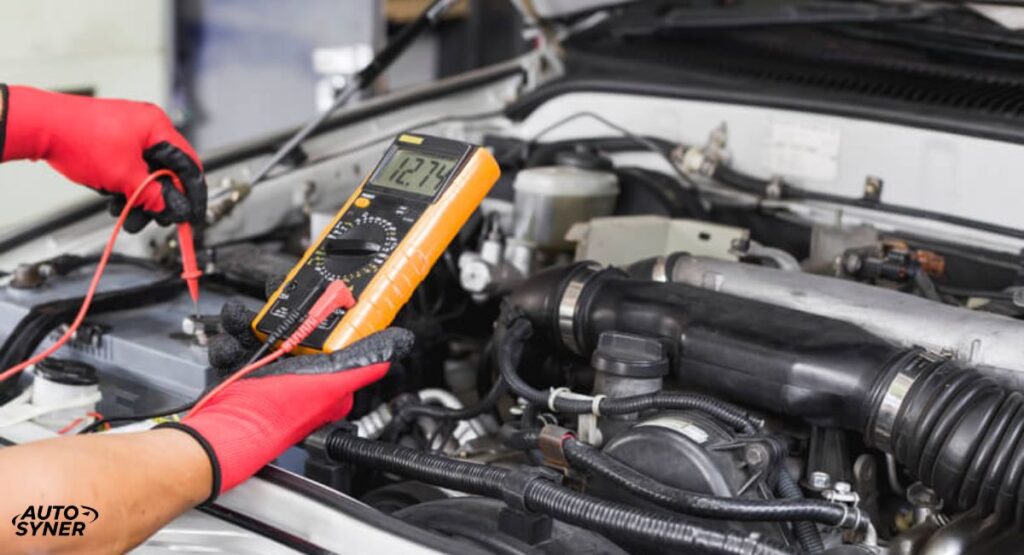Charging a car battery can seem daunting, but it is a simple task once you know the basics. You will need a few tools and a basic understanding of the process. This guide will walk you through everything you need to do to charge your car battery safely and effectively. With these tips you will have your battery up and running in no time. Let get started on making battery charging easy.
Before you begin make sure you have the right equipment and follow safety guidelines. Knowing how to properly connect the charger and monitor the charging process is key. By following these steps you can ensure your battery gets the power it needs without any issues. This introduction will help you get familiar with the process and avoid common mistakes. Ready to charge up?
Understanding Car Battery Charging
Understanding car battery charging is key to maintaining your vehicle. A car battery stores electrical energy needed to start your engine. When the battery runs low it needs to be recharged to work properly. Charging the battery helps keep your car running smoothly and prevents unexpected breakdowns. Here a simple overview of how battery charging works.
The charging process involves using a battery charger to replenish energy. Connect the charger to the battery following the correct procedure. Allow the charger to work until the battery is fully charged. Regularly check the battery condition to ensure it stays healthy. Proper understanding and maintenance can extend the life of your car battery.
Choosing the Right Charger
Choosing the right charger is crucial for your car battery. Pick a charger that matches your battery type and size. Make sure it has the right settings to ensure a safe and efficient charge.
- Match Battery Type and Size: Ensure the charger is compatible with your car battery type (e.g., lead-acid, AGM, or gel) and size. Using the correct charger helps avoid damage and ensures effective charging.
- Adjustable Settings: Look for a charger with settings that allow you to adjust the charging rate. This feature is useful for different battery sizes and conditions helping to optimize the charging process.
- Automatic Shut-Off: Select a charger with an automatic shut-off feature. This helps prevent overcharging, which can damage the battery and reduce its lifespan.
- Clear Display: A charger with a clear display makes it easier to monitor the charging progress and battery status. This feature provides real-time updates and helps you track the battery health.
- Reputable Brand: Choose a charger from a well-known and reliable brand. A reputable brand often ensures better quality safety and customer support, giving you peace of mind during the charging process.
Read This Blog: Who Makes Infiniti Cars
Preparing Your Car and Charger
Preparing your car and charger is important for a safe battery charge. Start by turning off your car and removing the keys from the ignition. Ensure the battery terminals are clean and free from corrosion. Set up the charger according to its instructions and connect it to the battery. Follow these steps to make sure everything is ready for a successful charge.
Next place the charger in a well-ventilated area and keep it away from any flammable materials. Double-check that all connections are secure before starting the charger. Make sure the charger settings match your battery specifications. Once everything is in place you can turn on the charger and let it work. Proper preparation helps avoid any issues during the charging process.
Step-by-Step Guide to Charging
To charge your car battery first connect the charger to the battery terminals. Set the charger to the correct settings for your battery. Turn on the charger and let it charge until the battery is full.
- Turn off your car: Ensure your car is completely turned off before you start. Remove the keys from the ignition to avoid any electrical issues while charging.
- Clean the battery terminals: Inspect the battery terminals for corrosion or dirt. Clean them with a wire brush or a terminal cleaner to ensure a good connection.
- Connect the charger: Attach the charger positive (red) clamp to the battery positive terminal. Connect the negative (black) clamp to the battery negative terminal. Make sure the clamps are secure and properly connected.
- Set the charger: Adjust the charger settings according to your battery specifications. Choose the correct voltage and amperage for optimal charging. Refer to your battery manual if needed.
- Start charging: Turn on the charger and let it work until the battery is fully charged. Check the charger periodically to monitor the progress. Once charging is complete turn off the charger and carefully disconnect the clamps.
Safety Tips for Charging Your Battery
Safety is crucial when charging your car battery. Always work in a well-ventilated area to avoid harmful fumes. Wear protective gloves and goggles to protect yourself from acid spills.
- Work in a Ventilated Area: Ensure you are in a well-ventilated space to avoid gas buildup.
- Avoid Flames and Sparks: Keep flammable materials away from the charging area.
- Wear Protective Gear: Use gloves and safety glasses to protect yourself.
- Check Connections: Make sure all connections are secure before starting.
- Follow Instructions: Always adhere to the charger user manual for safety.
Never smoke or use an open flame near the battery. Follow the charger instructions carefully to prevent accidents.
Troubleshooting Common Issues
If your battery is not charging check all connections to ensure they are secure. Make sure the charger is set correctly for your battery type. If the battery still does not charge it might need to be replaced. Consult a professional if you encounter persistent problems.
Battery Doesnot Charge
- Check if the charger is properly connected.
- Ensure the charger is turned on and set correctly.
- Inspect the battery for damage or leaks.
Charger Is not Working
- Verify the charger is plugged in and powered on.
- Check for any blown fuses or damaged cables.
- Test the charger on a different battery to rule out faults.
Battery Charges Slowly
- Make sure the charger settings match the battery specifications.
- Clean any corrosion on the battery terminals.
- Ensure the battery is not old or damaged.
Maintaining a Healthy Car Battery
Maintaining a healthy car battery is essential for reliable vehicle performance. Regularly check the battery terminals for corrosion and clean them if needed. Ensure the battery is securely mounted to prevent vibration damage. Keep the battery charged and avoid letting it run down completely. Regular maintenance can help extend the life of your battery.
Also check the battery fluid level if it is a type that requires it. Test the battery charge level periodically to ensure it is holding a charge. Inspect the battery for any signs of wear or leaks. Replace the battery when it shows signs of significant wear. Keeping up with these steps will help keep your battery in good condition.
Frequently Asked Question
How do I start charging a car battery?
First, turn off your car and remove the keys. Connect the charger to the battery terminals, making sure to follow the correct order. Turn on the charger and let it do its job.
Can I use any charger to charge my car battery?
No, you should use a charger that matches your battery type and size. Check the charger specifications to ensure compatibility. Using the right charger prevents damage.
How long does it take to charge a car battery?
Charging time depends on the battery’s size and the charger power. It usually takes several hours for a full charge. Refer to the charger instructions for specific timing.
What should I do if my battery does not charge?
Check the connections to ensure they are secure and clean. Make sure the charger is set correctly for your battery. If it still doesn’t charge, the battery may need replacement.
Is it safe to charge a car battery indoors?
Charge the battery in a well-ventilated area to avoid harmful fumes. Avoid charging in confined or flammable spaces. Always follow safety instructions to prevent accidents.
Conclusion
Charging a car battery is a straightforward process that can help you avoid unexpected breakdowns. Start by ensuring you have the right charger and prepare your car by turning it off and cleaning the battery terminals. Connect the charger to the battery carefully following the correct order, and let it charge until it is full. Always work in a well-ventilated area and follow safety guidelines to prevent accidents.
Regularly maintaining your battery by checking its condition and keeping it charged can extend its lifespan. If you notice any issues, such as the battery not holding a charge or showing signs of wear, address them promptly. By following these simple steps and taking proper care, you can keep your car battery in good shape and ensure reliable performance for your vehicle.







